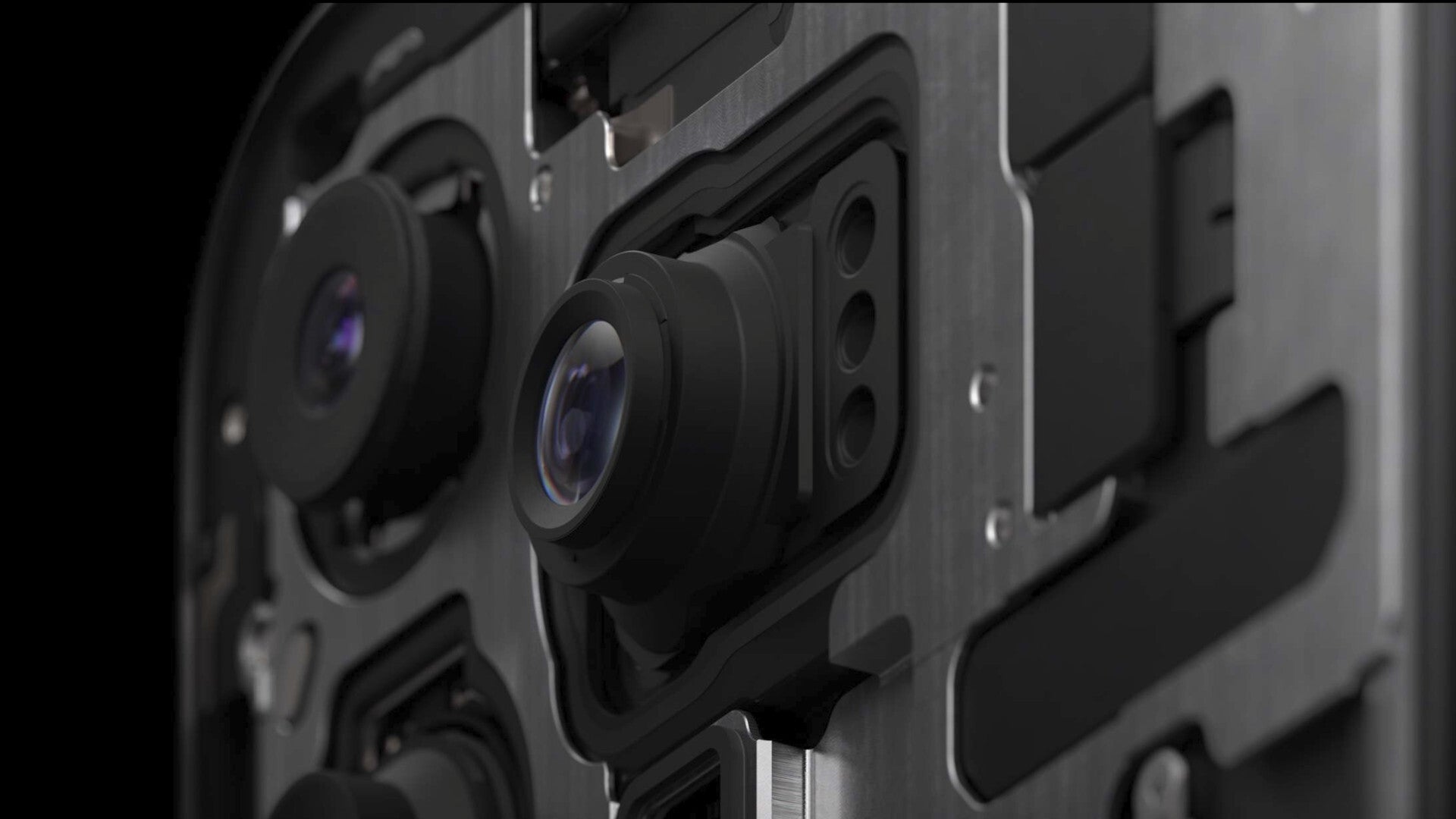Apple's 5x Tetraprism zoom on the iPhone 15 Pro Max: Up Periscope

One of the big changes made to this year's iPhone 15 Pro Max is the addition of the first periscope lens ever found on an iPhone. Apple's implementation of the periscope lens is different than the method used by Android phone manufacturers but the goal is the same: increase the focal length of the lens making it capable of delivering greater optical zoom than could be possible otherwise.
Typically recognizable by the square shape of the lens, a periscope lens allows a smartphone to offer an optical zoom range that could not be possible without seeing protruding lenses on the outside of a phone. Instead, a prism placed at a 90-degree angle to the optical axis is placed inside the phone at the end of a tube that is aligned along the length or width of the phone.
Light enters the phone from outside the device and bounces off the prism at a right angle through the tube to the image sensor. This extends the focal length of the lens beyond what would be possible due to the size of the phone.
The first phone considered to sport a periscope lens was the Sharp 902 released in 2004. The 2MP camera on the phone also was capable of delivering 2x optical zoom. While it isn't 100% clear that Sharp used a periscope lens, the square lens seems to be a good clue. One of the phones that really popularized the periscope lens was the Huawei P30 which delivered 5x optical zoom.
Since then, we have seen other phone manufacturers include a periscope lens with their phones including Samsung, Google, Oppo, and others. However, one company that had not used the technology was Apple. The rumor mill had for months spit out the speculation that Apple would include a periscope lens on the iPhone 15 Pro Max only this year. The rumor turned out to be true allowing Apple to increase the optical zoom to 5x on the iPhone 15 Pro Max from 3x on last year's Pro models. However, in typical Apple fashion, it did so using a different implementation of the periscope lens that is called a "Tetraprism" periscope lens.

This visualization shows how the Tetraprism design bounces light four times to achieve optical 5x zoom
The name Tetraprism means four prisms and unlike other periscope lenses that use a single prism to bend light 90 degrees, the iPhone 15 Pro Max uses four prisms to reflect light inside the phone four times to allow the light to create the longer path necessary to create the equivalent of a 120mm lens on a DSLR camera. This gives iPhone 15 Pro Max users the ability to snap pictures using 5x optical zoom.
As Misha Scepanovic, Apple's director of optical engineering explains, "The light rays are reflected four times through the glass structure, allowing the light to travel for longer in a much smaller design. This creates enough separation between the lens and the sensor to enable the longer focal length."
With the Tetraprism technology, Apple is able to place the image sensor in the same plane as all of the sensors used on the other cameras. What this does is give Apple the room to include the stabilization hardware used to prevent shaking hands or camera movement from making a video or photograph blurry.

The smart Tetraprism design allowed Apple to include Sensor Shift stabilization to keep those typically shaky zoom shots steady
The Telephoto camera on the iPhone 15 Pro Max not only includes the Tetraprism lens, but it also combines optical image stabilization (OIS) and autofocus 3D sensor-shift module creating Apple's most advanced stabilization system. While OIS involves the moving of the lens to counter shaky hands, the sensor-shift module moves the sensor in order to keep images steady.
The sensor-shift module for the telephoto lens moves in three directions (hence the 3D in the name) which is a new achievement for a smartphone, and can make up to 10,000 micro-adjustments per second. That's twice the number of micro-adjustments per second that the iPhone 14 Pro models and the iPhone 15 Pro can make.
Speaking of unsteady hands, in an interview machine translated from French, Apple's VP of camera software engineering Jon McCormack said that Apple limited the Tetraprism lens to 5x optical zoom due to stabilization at that focal length. "The 5x zoom is something that we can stabilize incredibly well. If you look at the 10x zoom, unless you have the steadiest hands in the world or a tripod, it's really difficult to use." The interview was published in Numerama nearly a week after Apple unveiled the 2023 iPhone line.
Interestingly, there are rumors that Samsung is planning to remove 10x optical zoom capabilities from next year's Galaxy S24 Ultra model. Samsung has offered 10x optical zoom on its top-of-the-line flagship phones since the Galaxy S21 Ultra back in 2021.
Even though you are limited to 5x optical zoom on the iPhone 15 Pro Max, by pinching out on the screen, you can get the device to take photos or videos at 25x using digital zoom. And that means that once you pass 5x, the quality of the photo or video will decline.
Most of the images we snapped using the 5x optical zoom showed good detail without being oversharpened. A good examples of this was the photo of the brick building as the building itself, the sign on the building, and the trees in the background were sharp. Colors were realistic and not overly saturated Photos taken at the same time using the 5x optical zoom on the Samsung Galaxy S22 Ultra were not as sharp in areas although the colors were ever so slightly brighter.
For the most part, the 10x digital zoom on the iPhone 15 Pro Max delivered surprisingly detailed images although it couldn't match the results achieved with the 10x optical zoom on the Galaxy S22.
The iPhone has developed a reputation for taking the best video recordings by a smartphone and nothing has changed in this department. Shooting in ProRes (4K at 30fps) results in smooth video with good detail and having the 5x optical zoom to use on the iPhone 15 Pro Max compared to the 3x optical zoom on the iPhone 15 Pro does make a difference when it comes to video recording a building that is far away, or a person who is in the distance.

Beautiful nighttime shot taken with the 5x optical zoom on the iPhone 15 Pro Max
Next year, we could see Apple bring the Tetraprism lens to the iPhone 16 Pro along with the iPhone 16 Pro Max. Considering the comments made by Jon McCormack that we mentioned earlier, Apple has no reason to take the iPhone past 5x optical zoom at the moment. That's especially true if Samsung does eliminate 10x optical zoom from the Galaxy S24 Ultra. But it's a good start for Apple as it did the usual: added a feature that Android has had for a while, but put its own spin on it and gave it a new name.
Follow us on Google News














Things that are NOT allowed:
To help keep our community safe and free from spam, we apply temporary limits to newly created accounts: